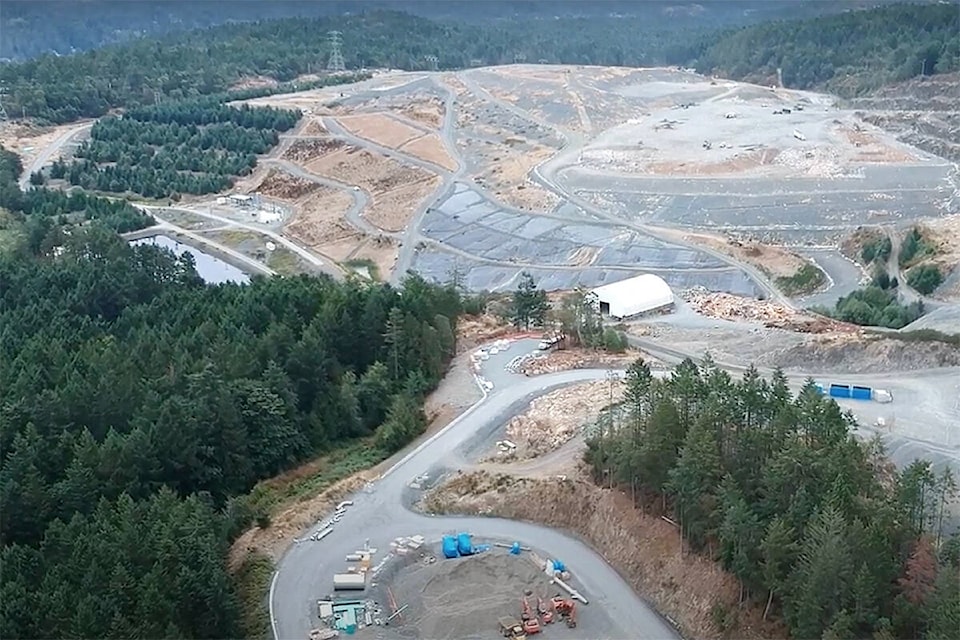While biosolids continue to exhaust areas of Hartland landfill, a proposal to spread the wastewater treatment end products within the Capital Regional District’s borders has been struck down.
The CRD’s environment services committee on Wednesday (June 21) voted against that recommendation for in-region land application, meaning the South Island’s biosolids could still be bound for the Nanaimo region or elsewhere.
The direction against the recommendation also leaves the short-term solution for the biosolids unclear as staff said immediate alternatives are becoming urgent with an area of Hartland accepting them being “exhausted at a much higher rate than anticipated.”
B.C. is against landfilling biosolids and requires communities to have a beneficial use for products as it says nutrients in the dried pellets can benefit plants and soils, while they can also help store greenhouse gas emissions.
The region’s primary beneficial use strategy for the biosolids is sending them to a Richmond cement plant where they’re used as a fuel alternative, but that facility hasn’t taken CRD product since last July as issues with damaged equipment at the site still aren’t resolved.
The committee passed a motion recommending the CRD board stick with its short-term contingency plan and expedite work on a planned thermal processing pilot. Permitting that pilot is still years away, according to a timeline staff outlined.
The CRD amended its short-term policies earlier this year to allow using biosolids for out-of-region, non-agricultural purposes and identified an existing reclamation program at a Cassidy quarry that could use the substances. That led to the Regional District of Nanaimo expressing concerns over the plans and asking the CRD to reconsider.
“We have difficulty understanding the current approach of the CRD to prevent land application of biosolids within your region while shipping it to another region for the same use,” RDN chair Vanessa Craig wrote in a May 30 letter to the CRD.
Staff said on Wednesday they’re close to addressing the RDN concerns and they’re still looking into whether the RDN has the authority to bar the privately-run quarry from accepting the biosolids.
“We continue to explore the opportunity up in Nanaimo,” the CRD’s environment staff said Wednesday, adding they’re also looking at off-Island options.
Staff will be providing a report next month on the long-term biosolids management process and that update will include the potential for using thermal technologies.
“We know that we need an ultimate solution and we are headed toward it,” said committee chair Barb Desjardins.
Prior to the vote, local coalitions representing business, environmental and other groups reiterated their longstanding opposition to land application at the landfill and in the region. The groups have expressed their concern over the impact of things like forever chemicals, pharmaceuticals and other substances in biosolids, even if they exist at microscopic levels.
“Many jurisdictions around the globe are actively strengthening their regulations to limit land application of biosolids,” said Jon O’Riodan of the Mount Work Coalition.
His group and the Peninsula Biosolids Coalition said allowing land application would be a 180-degree policy reversal without adequately consulting the public and First Nations.
The CRD’s Class A biosolids contain far lower concentrations of metals, pathogens and bacteria compared to the maximums allowed by the province and staff have said the scientific consensus is properly applying biosolids to land can have many benefits and minimal risks.
READ: Thermal processes possible for CRD’s long-term biosolid solution
